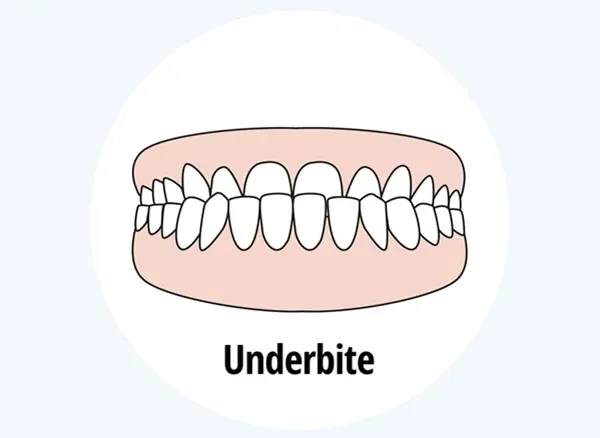The Surgical Procedure
Dr. Hoss Abar
What to Expect During Orthognathic Surgery
Orthognathic surgery, also known as corrective jaw surgery, is used for various minor and major abnormalities that affect the skull and teeth. These problems can include problems with chewing, speaking, and even breathing. This blog post is a one-stop guide for patients who are planning to undergo orthognathic surgery and want to know what to expect during the treatment.
Understanding Orthognathic Surgery
Orthognathic surgery is a surgical procedure aimed at correcting anomalies in the jaw and facial bones. These abnormalities may lead to problems with the ability to chew food, speak, and breathe, and the face's general appearance. It entails adjustment of the jaws to improve their function and appearance to improve the quality of life of the patient.
Conditions That May Require Orthognathic Surgery
Orthognathic surgery is often recommended for individuals with:
- Malocclusion (Bad Bite): In cases where the teeth are not as well aligned as they should be.
- Jaw Misalignment: Concerns like overbite, underbite, or crossbite.

- Sleep Apnea: Most serious situations when jaw positioning may cause breathing problems during sleep.
- Congenital Conditions: Congenital anomalies of the jaws and facial region.
- Trauma or Injury: Injuries such as those occasioned by falls or impact on the jaw.
- Speech Problems: This condition is known to be a result of improper alignment of the jaws.
Types of Orthognathic Surgeries
Orthognathic surgery encompasses various types of procedures depending on the specific jaw issues being addressed:
- Maxillary Osteotomy: Orthognathic surgery is a surgical procedure that involves the alteration of the upper jaw to correct misalignment of the jaws, dental occlusion, and facial cosmetics.
- Mandibular Osteotomy: Orthognathic surgery which is the surgical adjustment of the lower jaw to correct improper bites such as underbite or overbite.
- Bimaxillary Osteotomy: The treatment that involves making two surgical incisions and repositioning both the upper and lower jaws to achieve proper alignment.
- Genioplasty: Chin surgery is commonly done in combination with other jaw surgeries to correct facial disproportion.
Surgery procedure
There are some general steps involved in the surgery as follows:
- Anesthesia: The operation is usually carried out while the patient is under general anesthesia, which means you will be asleep and will not feel any pain.
- Incisions: Incisions are made inside the mouth to avoid visible scarring, although in some cases, small external incisions may be necessary.
- Repositioning Bones: The surgeon then skillfully resects the jaw and places it in the correct position as required. Bones may be fixed with the help of plates, screws, or wires to maintain the proper position of the bones.
- Closure: The cuts are then sutured, and the sutures are mainly dissolvable and naturally shed from the body as time goes on.
- Duration: The duration of the surgery depends on the level of difficulty but may take between 2 to 5 hours on average.
Post-Surgery Care
Immediate Post-Operative Care
- Monitoring: You will be taken to the recovery room where you will be observed for any adverse effects which may occur right after the surgery.
- Hospital Stay: If the surgery is simple, you may be discharged after one day while if it is a complex one, you may be required to spend several days in the hospital. Medical personnel will address your pain and track your post-operative healing process.
- Pain Management: Some common symptoms usually experienced after orthognathic surgery include pain and discomfort. Your surgeon will prescribe pain relievers for this and antibiotics to take to avoid getting an infection.
At-Home Care
- Medication: Continue to take the medications for pain and antibiotics as directed by the doctor. Don’t miss any of the doses and report any side effects to your doctor.
- Wound Care: It is important not to develop an infection in the mouth, so brush your teeth regularly. Some of the measures may include taking a special mouthwash and not using a toothbrush in the initial days after the surgery.
- Diet: As advised by your surgeon, avoid consuming any solid food and stick to a liquid or soft-food diet. When you are ready, slowly start weaning back on the solid foods.
- Hydration: Make sure to drink enough water to support your recovery. Do not take alcohol and caffeine products because they contain fluids that can cause you to dehydrate.

Managing Swelling and Bruising
- Cold Compresses: Avoid touching the affected area with your fingers to prevent spreading the bacteria, and do not use hot compresses or apply ice packs to the face within the first 48 hours.
- Elevation: Do not lie flat on your back or your stomach while getting some rest to avoid increasing the swelling.
- Patience: Redness and black-and-blue marks may require several weeks to resolve. Always listen to your surgeon as he or she will advise you on when it is safe to get back to a normal lifestyle.
Follow-Up Appointments
- Regular Check-Ups: Follow up with your doctor for checkups to ensure that you are responding to the treatment. Your surgeon will evaluate the progress of your recovery and decide if it is time to take out the stitches and change the plan of treatment if required.
- Orthodontic Adjustments: If you are wearing braces, your orthodontist will also perform adjustments to enhance the alignment process.
Long-Term Recovery
- Healing Timeline: Usually, it takes several months to reach complete healing after orthognathic surgery. Fractures usually require 6-12 weeks to heal, though full recovery of muscles, and facial feeling may take up to one year.
- Physical Activity: This is especially important if you are a beginner since it is recommended that you do not engage in activities that will cause you to sweat profusely for at least the first two weeks. Remember that it is crucial to start exercising gradually depending on your surgeon’s advice.
- Diet Progression: To follow the normal diet as recommended, one should transition from soft foods. Take a proper diet to ensure that the body heals as required. Diet is very important and should be taken in the right proportion for the body to heal as required.
Emotional and Psychological Support
- Emotional Well-being: It is important to note that people can experience fluctuations in their emotional state during the recovery period. Maintain your connection with those who you can rely on and do not hesitate to address a specialist.
- Support Groups: It might also be valuable to find other people who have also had orthognathic surgery talk to them about their experiences and seek recommendations from them.
Contact your Pinole dentist, Dr. Hoss Abar, DDS, MSD at Abar Orthodontics, to learn more about the Surgical Procedure.
Resource:
Surgical Orthodontics Specialist
*This media/content or any other on this website does not prescribe, recommend, or prevent any treatment or procedure. Therefore, we highly suggest that you get the advice of a qualified dentist or other medical practitioners regarding your specific dental condition.*
More To Explore
About Us
We believe that every patient deserves to feel confident about their smile. Years of experience creating beautiful and flawless smiles.
Opening Hours:
Monday - Thursday: 8:00 AM - 5:00 PM
Friday: 8:00 AM - 12:00 PM
Saturday - Sunday: Closed
Abar Orthodontics, Pinole, CA
1500 Tara Hills Drive., Suite 204
Pinole, CA 94564
Abar Orthodontics, San Leandro, CA
145 East 14th street., #100
San Leandro, CA 94577
© 2025Abar Orthodontics | All rights reserved | Powered by:Vigorant, Inc.
